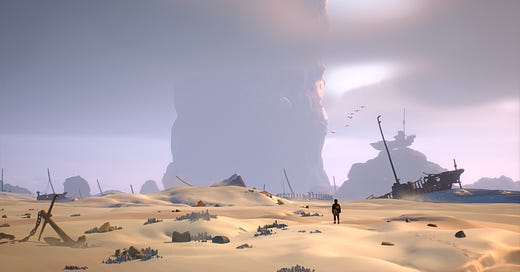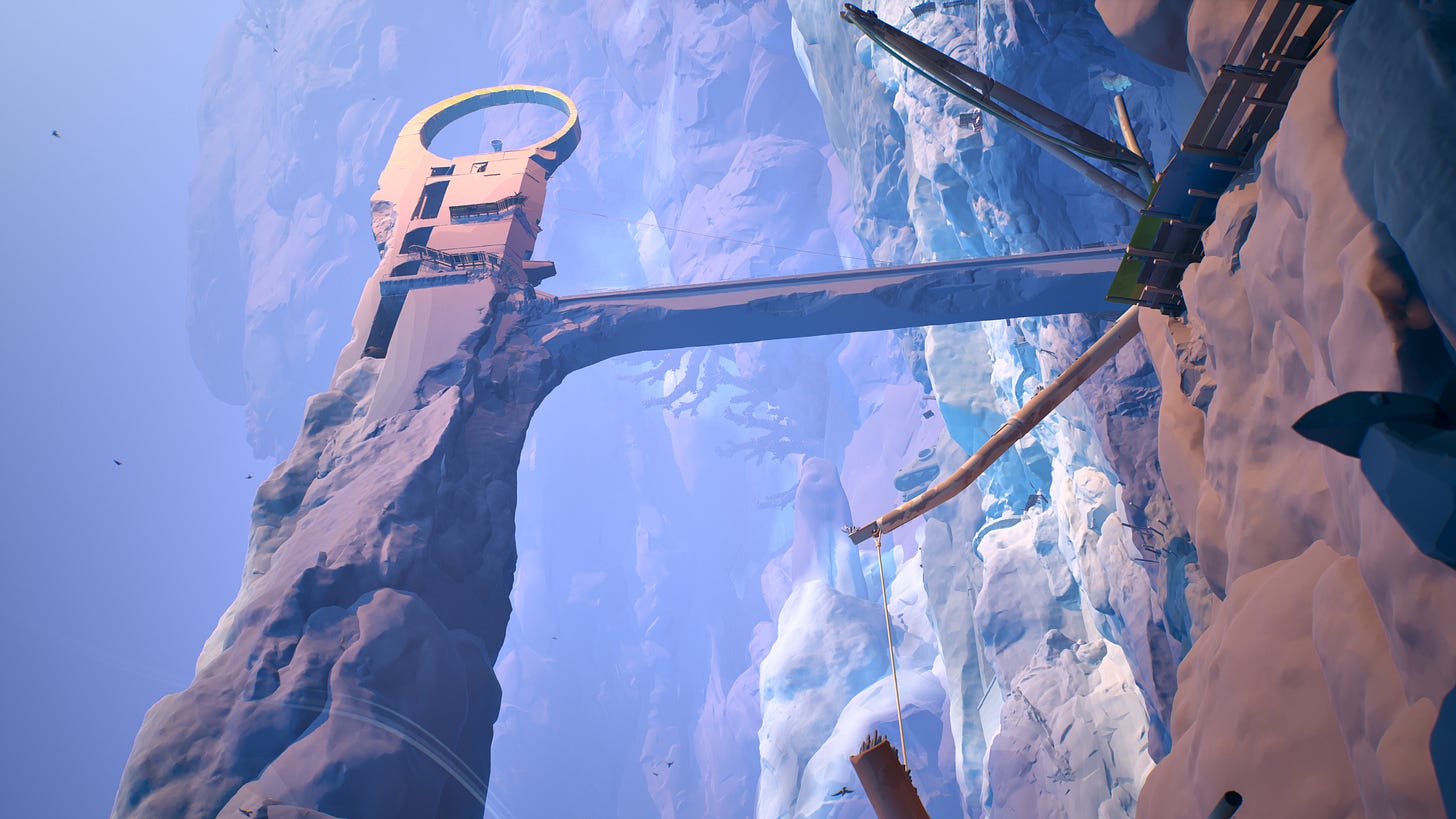I would assume that for most, climbing a death-defying mountain is the furthest thing from a relaxing, meditative experience. Just the act of watching a film where a protagonist is scaling a mountain gives me anxiety, or playing The Climb in VR which almost caused me to trip over my own feet. Then it is both surprising and compelling that a game like Jusant conveys such a peaceful approach to climbing: but the game does far more than that.
DON’T NOD, the creators of such narrative splendours like Vampyr, Remember Me and their greatest claim to fame Life is Strange have brought us their latest experience: a game with no dialogue but that has a lot to say. I’ve always admired DON’T NOD’s attention to world-building, characters, dialogue, and their hand in unbelievable soundtrack curation which in some ways makes Jusant a departure from their typical formula.
But as I played the bite-sized 4-hour experience, I began to glean the influence of DON’T NOD’s prior games in the DNA of Jusant, one of the most wonderful platformers I’ve played in some time.
The Climb
The world of Jusant involves a monolithic tower and a long wanderer with his companion who dares to make the journey up this natural wonder in the hopes of reaching their goal: the top. The opening moments display a world devoid of water and much life, with abandoned ships showing signs of a civilization long past.
As the player enters the tower and starts to begin their climb, you’ll come across more signs of civilization in the form of abandoned shops, taverns, various other infrastructure, various frescos to discover, and more. This is stunningly realized in the game visuals running at a crisp 60 frames using the impressive Unreal Engine 5. There were some rare moments where the frame rate came to a grind, but they were too few to be of significant note.
But even more than the graphical fidelity, it’s the game's art direction that is bold in its colour use and striking in its design.
For a dystopian setting, it’s quite beautiful.
But it’s not just the game's visual direction that lends to its incredible world-building, it’s the many dense pieces of lore players can find around the world. These can be experienced as notices, letters, missives between lovers, messages of goodbyes, and even journalistic articles. While I admit I did not sit and read every single one that I came across, I was intrigued by the many I did read: taking a moment to set the controller down and read about the trials that the people of this tower faced as the waves receded and what they knew of a normal life came to a close.
It’s simultaneously heartbreaking, compelling, and wonderful albeit heavy-handed way of portraying the world. While it can be a lot of reading, I do encourage you to read a few of these lore bits that have been put together with so much love, care, and prowess.
Discovering this world however requires far more than just our senses, it also involves doing a lot of climbing.
Hand-over-Hand
Jusant does something a lot of games struggle to accomplish when it comes to climbing in a virtual environment. They make it fun and engaging. Climbing in the game is simple: both triggers on your controller represent each hand and to climb you have to point in the direction you want to go and climb using each trigger one after the other which faithfully replicates the act of climbing, one hand over the other.
But it’s more than just that, players also have a limited amount of pitons which are braces they can attach to a surface to ensure they are keeping their climb safe. You also have a limited amount of rope adding another layer to this climbing puzzle, so there might be moments where you have to swing with your rope to get to the next zone without using up too much. There’s also a Breath of the Wild-esque stamina system where players must be mindful of how much they’re exerting themselves. Jusant does make one innovation over its inspiration which is the ability to take a rest mid-climb which I hope Nintendo takes note of.
But these aren’t the only tools at your disposal: each chapter in the game is its own unique biome that introduces new methods or enhancements to your traversal. After some time your companion, an adorable blue creature will be able to send out a pulse that interacts with various flora in the environment. A vine can extend outwards into the heavens to let players climb further, or a flower will blossom spurting out leaves for players to reach otherwise unreachable places. There are also some other notable ones that I’ll let players discover themselves.
While there are many ways to climb, sometimes the right direction is confusing to discern. Our little blue companion can place a glowing ring in the direction you have to go, but there were moments when I got frustrated and lost. There are also some moments where the climbing can be a bit finicky, not grabbing the right ledge or not swinging in the right direction.
Echos of the Past
From what we’ve learned from their prior releases and now Jusant, DON’T NOD knows how to put together a fantastic soundtrack. While it doesn’t have an extensive licensed soundtrack like the Life is Strange games, what it does have is an incredible original score by Guillaume Ferran who weaves together a compelling, auditory expression of the end of the world.
The soundtrack explores melancholic memories, energetic, tense moments, and everything in between: Without a doubt, Jusant’s soundtrack is one of my favourites of the year.
Adding to this auditory wonder is the sound design of the game. DON’T NOD has brought together a tapestry of sounds that weave together to reflect this unique, sombre dystopia. Standing on the edge of the cliff you can hear and in some ways feel the sound of the wind rushing past you, the crumbling ruins, and the sound of wildlife who call this tower their home. DON’T NOD also brings back one of my favourite aspects of Life is Strange, “the quiet moment.”
In Life is Strange this is shown when players have a moment to quietly reflect: a stirring song comes on followed by shifting scenes of the environment and after some time giving players a prompt to leave or to continue in this moment. Jusant has these in the form of conch shells where the lone wanderer places the ear and is able to hear the sounds of the past.
Small touches like this coupled with incredible attention to sound design and music sell Jusant as an auditory experience on top of being a visual and gameplay one.
Ascender
Jusant isn’t a very long experience or a mind-blowing one, but it is a momentary meditation for players to take some time to experience a quiet world such as this. Over the weekend I finished the game after a relatively stressful week: Jusant allowed me to escape all that with a simple plot, a beautiful world, compelling gameplay, and a soundtrack that felt like a healing experience.
This is one of DON’T NOD’s boldest experiments and a departure from their typical, and I truly hope they do more unique experiences like this in the future no matter how much I want another Life is Strange.
Jusant is a 9/10.














